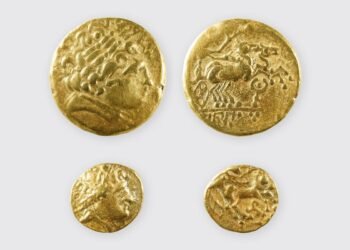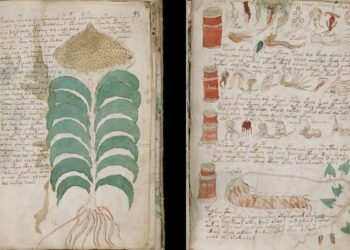Archaeologists working in Seyðisfjörður, a small village in East Iceland, have unearthed a rare Viking Age toy, believed to be a child’s plaything, that is carved from volcanic rock. This remarkable find is part of an ongoing excavation at the historical Fjörður farm site, which has been under investigation since 2020.

The artifact, a small figurine measuring approximately two inches long and just over one inch wide, is carved from volcanic tuff, a soft volcanic rock found locally. The toy appears to depict a four-legged animal, but its exact identity has sparked debate among the archaeologists. Most team members initially suggested that it could be a pig or a bear, with the latter being a less likely candidate given Iceland’s lack of native bear species. However, at least 600 polar bears have been recorded on the island since human settlement began. Some social media users, upon seeing pictures of the figurine, proposed that it might be an Icelandic dog.
Dr. Ragnheiður Traustadóttir, director of the Antikva archaeological team leading the excavation, expressed skepticism about the Icelandic dog theory. “When you hold the object, it doesn’t seem like a dog,” Traustadóttir said. “I owned an Icelandic dog for 14 years. I’m not sure.” Despite a chipped ear, the toy is otherwise well-preserved and can stand upright on a flat surface.
The discovery of toys in archaeological sites is rare, particularly in Iceland. “Children are not so visible in the Viking Age, so this is an amazing find,” Traustadóttir noted. “It is entirely logical since children existed in this period, as in any other, but it’s rare to find toys that have survived.”
The Fjörður excavation began as a preliminary dig ahead of the construction of avalanche protection walls in Seyðisfjörður, a village approximately 17 miles east of Egilsstaðir, the largest town in the region. What was initially expected to be a two-year project has now extended into its fifth summer, revealing a wealth of historical artifacts spanning over 1,000 years of Icelandic history. These include a farm mound, a mill, and a sheep shed from between the 18th and 20th centuries, medieval remains, and four Viking Age graves buried beneath an 11th-century landslide.
In addition to the toy, archaeologists have uncovered more than 4,000 artifacts during the excavation, including nearly 100 Viking game pieces from a board game called “hnefatafl,” spindle whorls, rock crystals, and 70 chess piece fragments, all crafted from volcanic tuff. In 2021, a particularly notable find was a stone-lined pit containing numerous bones, including whale bones. The purpose of this pit remains unclear, though it may have served as a refuse pit or had another specific function.
“There’s no other site in Iceland that has so many finds,” Traustadóttir remarked. The excavation team has dated many of their discoveries by analyzing the layers of ash from volcanic eruptions that have occurred since human settlers arrived in Iceland.
With the excavation due to conclude soon, the team is focusing on finishing their exploration of the ancient settlement’s floors and preparing to study the thousands of artifacts they have recovered.






















Disclaimer: This website is a science-focused magazine that welcomes both academic and non-academic audiences. Comments are written by users and may include personal opinions or unverified claims. They do not necessarily reflect the views of our editorial team or rely on scientific evidence.
Comment Policy: We kindly ask all commenters to engage respectfully. Comments that contain offensive, insulting, degrading, discriminatory, or racist content will be automatically removed.
Is it possible that the figurine’s function was not as a toy; however once made useless in its primary capacity, following the broken ear (thus ruining the bowstring register point) was then adopted by a child as a plaything? what’s known modernly as a ” Rocker release?” These types of assistive devices are still well used in the archery community.
I don’t know the context of the artifact, and I’m certainly not qualified in any way to speak on the matter; my imagination ran wild immediately on this one. If this item could be proven as a bow release, then that would be a significant find that proves even greater known technologies for the ancient Scandinavian people.
Too soft. It’s too porous. They’d likely have used bone instead of volcanic rock. Some Tuff is on par with or just a bit harder than soapstone.